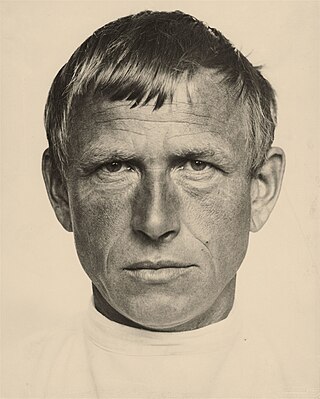
Wilhelm Heinrich Otto Dix was a German painter and printmaker, noted for his ruthless and harshly realistic depictions of German society during the Weimar Republic and the brutality of war. Along with George Grosz and Max Beckmann, he is widely considered one of the most important artists of the Neue Sachlichkeit.
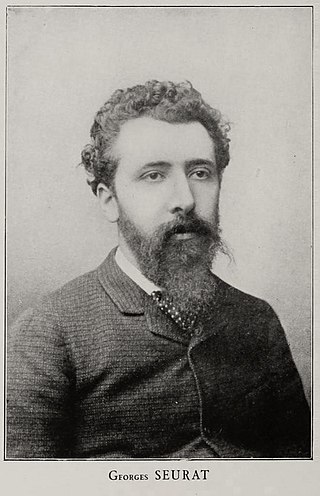
Georges Pierre Seurat was a French post-Impressionist artist. He devised the painting techniques known as chromoluminarism and pointillism and used conté crayon for drawings on paper with a rough surface.

George Grosz was a German artist known especially for his caricatural drawings and paintings of Berlin life in the 1920s. He was a prominent member of the Berlin Dada and New Objectivity groups during the Weimar Republic. He emigrated to the United States in 1933, and became a naturalized citizen in 1938. Abandoning the style and subject matter of his earlier work, he exhibited regularly and taught for many years at the Art Students League of New York. In 1959 he returned to Berlin, where he died shortly afterwards.

Visual art of the United States or American art is visual art made in the United States or by U.S. artists. Before colonization, there were many flourishing traditions of Native American art, and where the Spanish colonized Spanish Colonial architecture and the accompanying styles in other media were quickly in place. Early colonial art on the East Coast initially relied on artists from Europe, with John White the earliest example. In the late 18th and early 19th centuries, artists primarily painted portraits, and some landscapes in a style based mainly on English painting. Furniture-makers imitating English styles and similar craftsmen were also established in the major cities, but in the English colonies, locally made pottery remained resolutely utilitarian until the 19th century, with fancy products imported.

The New Objectivity was a movement in German art that arose during the 1920s as a reaction against expressionism. The term was coined by Gustav Friedrich Hartlaub, the director of the Kunsthalle in Mannheim, who used it as the title of an art exhibition staged in 1925 to showcase artists who were working in a post-expressionist spirit. As these artists—who included Max Beckmann, Otto Dix, George Grosz, Christian Schad, Rudolf Schlichter and Jeanne Mammen—rejected the self-involvement and romantic longings of the expressionists, Weimar intellectuals in general made a call to arms for public collaboration, engagement, and rejection of romantic idealism.
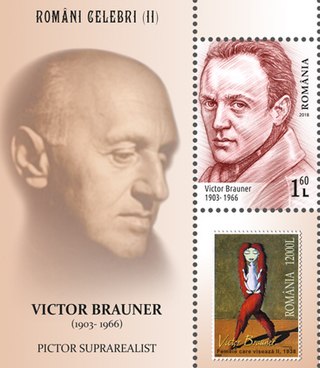
Victor Brauner was a Romanian painter and sculptor of the surrealist movement.

Metaphysical painting or metaphysical art was a style of painting developed by the Italian artists Giorgio de Chirico and Carlo Carrà. The movement began in 1910 with de Chirico, whose dreamlike works with sharp contrasts of light and shadow often had a vaguely threatening, mysterious quality, "painting that which cannot be seen". De Chirico, his younger brother Alberto Savinio, and Carrà formally established the school and its principles in 1917.
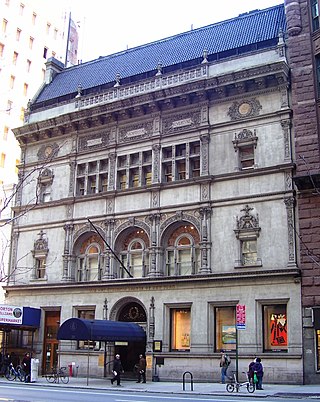
The Art Students League of New York is an art school in the American Fine Arts Society in Manhattan, New York City. The Arts Students League is known for its broad appeal to both amateurs and professional artists.

Romero Britto is a Brazilian artist, painter, serigrapher, and sculptor. He combines elements of cubism, pop art, and graffiti painting in his work, using vibrant colors and bold patterns as a visual expression of hope, dreams, and happiness.

Paul McCarthy is an American artist who lives and works in Los Angeles, California.
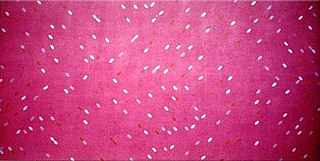
Lawrence M. "Larry" Poons is an American abstract painter. Poons was born in Tokyo, Japan, and studied from 1955 to 1957 at the New England Conservatory of Music, with the intent of becoming a professional musician. After seeing Barnett Newman's exhibition at French and Company in 1959, he gave up musical composition and enrolled at the School of the Museum of Fine Arts, Boston. He also studied at the Art Students League of New York. Poons taught at The Art Students League from 1966 to 1970 and currently teaches at the League.
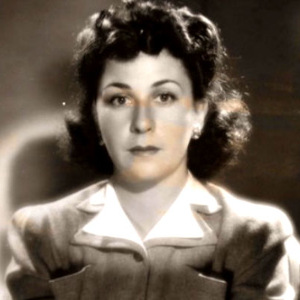
Altina Schinasi was an American sculptor, filmmaker, actress, entrepreneur, window dresser, designer, and inventor. She was known for designing what she called the "Harlequin eyeglass frame", popularly known as cat-eye glasses.
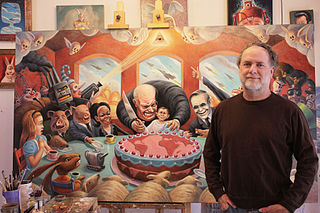
Mark Bryan is an American painter. Bryan's work travels in two distinct directions. Satirical works of social, political and religious comment and works which take an inward track to the imagination and subconscious. Humor and parody play a large role in many of his paintings. Style elements and influences in his work include classical painting, illustration, Romanticism, Surrealism and Pop Surrealism.

The Circus is an oil on canvas painting by Georges Seurat. It was his last painting, made in a Neo-Impressionist style in 1890–91, and remained unfinished at his death in March 1891. The painting is located at the Musée d'Orsay in Paris.

Parade de cirque is an 1887-88 Neo-Impressionist painting by Georges Seurat. It was first exhibited at the 1888 Salon de la Société des Artistes Indépendants in Paris, where it became one of Seurat's least admired works. Parade de cirque represents the sideshow of the Circus Corvi at place de la Nation, and was his first depiction of a nocturnal scene, and first painting of popular entertainment. Seurat worked on the theme for nearly six years before completing the final painting.

Le Grand Cirque is an oil and gouache on canvas painting by Belarusian-French artist Marc Chagall created in 1956.

Le Grand Cirque is a 1968 oil on canvas painting by Belarusian-French artist Marc Chagall.

The Love Sick is an oil on canvas painting by the German expressionist painter George Grosz, executed in 1916. The unsigned work is held at the Kunstsammlung Nordrhein-Westfalen, in Düsseldorf. It was bought from the New York gallery owner Richard L. Feigen, in 1979.

Art Bastard is a 2016 documentary film written and directed by Victor Kanefsky. It details the life of Artist Robert Cenedella and explains how specific moments and experiences from childhood to present day influenced his style as a New York Artist. The film was well received by critics and audiences alike, and garnered attention when it became an Official Selection at the Newport Beach Film Festival on April 25, 2016. Shortly thereafter, it was publicly released to select movie theaters across the United States on June 3, 2016, and began receiving critical acclaim in both domestic and international film festivals by winning several awards, including Best Documentary at Idyllwild International Festival of Cinema (2016), the Manchester Film Festival (2016), East Hampton TV Festival at Guild Hall of East Hampton (2019), and at the NYC International Film Festival (2019).
The Wanderer is an oil painting on canvas created by the German artist George Grosz. The painting was completed in 1943 and is currently on display at the Memorial Art Gallery in Rochester, New York.




















